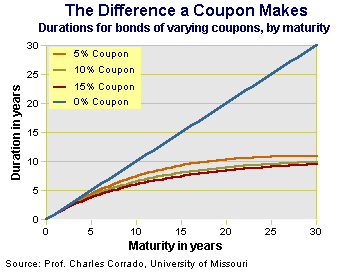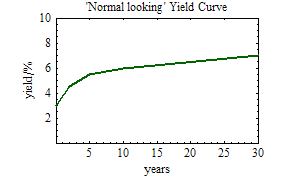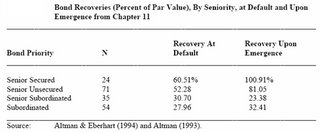Just as Bill Clinton was forced to abandon spending initiatives after Republicans took over the House and Senate in the 1994 elections, President Barack Obama's agenda may be constrained as voter concerns over the budget deficit grows. The latest Bloomberg News polls show likely voters favor Republicans.
With spending held in check, 10-year Treasury yields fell to 5.57 percent by the end of 1995 from 8.03 percent after the November 1994 election while stocks rallied and the Federal Reserve cut interest rates as the economy slowed. The Fed is now debating how to bolster growth after reducing benchmark rates to almost zero failed to lower the unemployment rate.
“There are parallels,” said Thomas di Galoma, head of U.S. rates trading at Guggenheim Capital Markets LLC, a New-York based brokerage for institutional investors. “The Republicans will draw a line in the sand about what money can be spent. That's very supportive of the bond market.”
Yields on Treasuries due in five years or less are already at record lows, providing less scope for a rally like in 1995 when they gained 18.5 percent as measured by Bank of America Merrill Lynch index data. Even so, yields are unlikely to rise to levels that restrict the economy as lawmakers tangle over spending. Treasuries have returned 8.45 percent this year.
“Gridlock is good,” said Mitchell Stapley, the Grand Rapids, Michigan-based chief fixed-income officer for Fifth Third Asset Management, which oversees $22 billion.
The median estimate of 59 economists, strategists and analysts surveyed by Bloomberg News is for the 10-year yield to rise to 3.25 percent by the end of 2011, from 2.56 percent on Oct. 15. A month ago, the median estimate was 3.5 percent.
The yield on the benchmark 2.625 percent note due in August 2020 rose 17 basis points last week. Two-year note yields dropped as low as 0.327 percent on Oct. 12 before finishing the week at 0.359 percent, while five-year yields, which closed at 1.19 percent on Oct. 15, touched 1.07 percent on Oct. 8.
Ten-year yields fell 6 basis points, or 0.06 percentage point, to 2.50 percent at 1:44 p.m. in New York. Five-year notes yielded 1.12 percent, while the two-year rate was 0.35 percent.
Democrats have controlled the House of Representatives and Senate since Obama was elected, as during the first two years of the Clinton administration. The Senate has 59 Democrats, while the House is divided 255 to 178, with two seats vacant.
The U.S. government posted its second straight federal budget deficit in excess of $1 trillion from costs associated with the bailout of the financial system. The $862 billion in fiscal stimulus spending passed by Congress in 2009 has helped push the total amount of marketable Treasury debt outstanding to $8.5 trillion from less than $6 trillion at the start of 2009.
The results of a Bloomberg National Poll released last week shows more than half of likely voters agreed the federal budget deficit is “dangerously out of control and threatens our economic future.” The poll interviewed 721 likely voters and has a margin of error of plus or minus 3.7 percentage points.
The most motivated voters -- those who say they will definitely vote and are extremely interested in the election -- lean Republican over Democrat, 51 percent to 37 percent.
Senator Orrin Hatch, who is line to chair the Senate Finance Committee if Republicans win control in the Nov. 2 elections, said he sees fewer prospects for bipartisanship in the next Congress. Democrats have created strains by expanding government the last two years, particularly taking power from states under a health-care program he helped establish for lower-income children, he said.
“I've got to say, that was almost the final straw to me,” the Utah senator said in an interview on “Political Capital with Al Hunt” on Bloomberg Television. “I'm certainly not going to let them keep spending and taxing us and building more government.”
From a deficit of $203.1 billion in 1994, Clinton worked with a Republican Congress to produce a $70.2 billion surplus by 1998, the first since 1969 when Republican Richard Nixon was President and Democrats controlled both houses. The surplus reached $236.9 billion in 2000.
Obama may veto efforts to block spending and make it more difficult for elected officials to reach agreements on extending the tax cuts enacted under the George W. Bush administration, continuing unemployment benefits and spending on infrastructure, said Priya Misra, head of U.S. rates strategy at Bank of America Merrill Lynch in New York. The firm is one of 18 primary dealers of U.S. securities that trade with the Fed and are obligated to bid at Treasury debt auctions.
“The problem is right now you actually need action to be taken,” said Misra, who predicts that 10-year note yields may fall as low as 2 percent. “It's a negative for the economy, but it will keep a bid in Treasuries.”
Fiscal stimulus can work with monetary policy to boost an economy. Christina Romer, the former chairman of Obama's Council of Economic Advisers, said the President pushed the largest possible stimulus bill, the American Recovery and Reinvestment Act, through Congress, though ideally it should have been larger.
“Given how we were just falling off the edge of a cliff, that act absolutely was crucially important to stopping the fall and helping us to turn the corner,” Romer said in an interview last week with Bloomberg Television. “Given where we were, we needed to do more.”
Chances for additional fiscal stimulus aren't good because people now “treat it like a dirty word,” Romer said. “We need some more of it. And it's something that would help put people back to work.”
Economists have slashed their GDP growth estimates for 2010, to 2.7 percent from 3.3 percent in May, based on the median of 83 economists surveyed by Bloomberg. For 2011, it's 2.45 percent. Fed Chairman Ben S. Bernanke said in an Oct. 15 speech that additional monetary stimulus may be warranted because inflation is too low and unemployment is too high.
“There would appear -- all else being equal -- to be a case for further action,” Bernanke said in remarks to a Federal Reserve Bank of Boston conference.
Gridlock in Congress also may be unable to reduce the deficit, potentially damping demand for Treasuries at a time when some parts of the market are signaling the securities are too expensive.
A Fed measure of risk in Treasuries that includes expectations for interest rates, growth and inflation shows the securities are the most overvalued since the financial crisis in December 2008, just before 10-year note yields almost doubled in the following six months.
Last week yields on 30-year bonds rose 23 basis points to 3.98 percent, or a record 1.42 percentage points more than 10- year rates in a sign that bond investors expect moves by the Fed to spark growth and inflation will work.
“The market is buying into the Fed mantra that it will work to get us out of this low inflationary environment,” said Michael Pond, an interest-rate strategist in New York at Barclays Plc, another primary dealer.
While spending cuts are usually good for bonds, they may hurt companies that count on federal contracts. A Goldman Sachs Group Inc. index of corporations getting 20 percent or more of revenue from government lagged behind the Standard & Poor's 500 index last quarter after beating it since September 2009.
Bethesda, Maryland-based Lockheed Martin Corp., which gets almost all its revenue from defense projects, has fallen 5 percent since July as the S&P 500 rallied 15 percent. Tenet Healthcare Corp., based in Dallas, depends on the U.S. for half its revenue and is trailing the market by 7 percentage points.
The September employment report, which showed state governments cutting positions for teachers and other workers, leading to a 95,000 drop in payrolls, is a sign that lack of federal spending to help municipal governments is hurting the recovery, said David Brownlee, head of fixed income at Sentinel Asset Management in Montpelier, Vermont.
“If they're going to play that game of chicken, it could be to the point where they throw cold water on the economy,” said Brownlee, whose firm manages $22 billion. “We've got more problems than answers.”
(ref: Bloomberg News, October 19, 2010)








